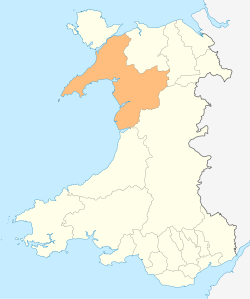| Tregarth | |
|---|---|
 St Mary's Church, Tregarth | |
Location within Gwynedd | |
| Population | 1,307 |
| OS grid reference | SH603678 |
| Community | |
| Principal area | |
| Country | Wales |
| Sovereign state | United Kingdom |
| Post town | BANGOR |
| Postcode district | LL57 |
| Dialling code | 01258 |
| Police | North Wales |
| Fire | North Wales |
| Ambulance | Welsh |
| UK Parliament | |
| Senedd Cymru – Welsh Parliament | |
Tregarth is a village between the town of Bethesda and the city of Bangor in Gwynedd, North Wales. It is in Llandygai Community. It had a population of over 1,300 as of the 2011 census. [1]

